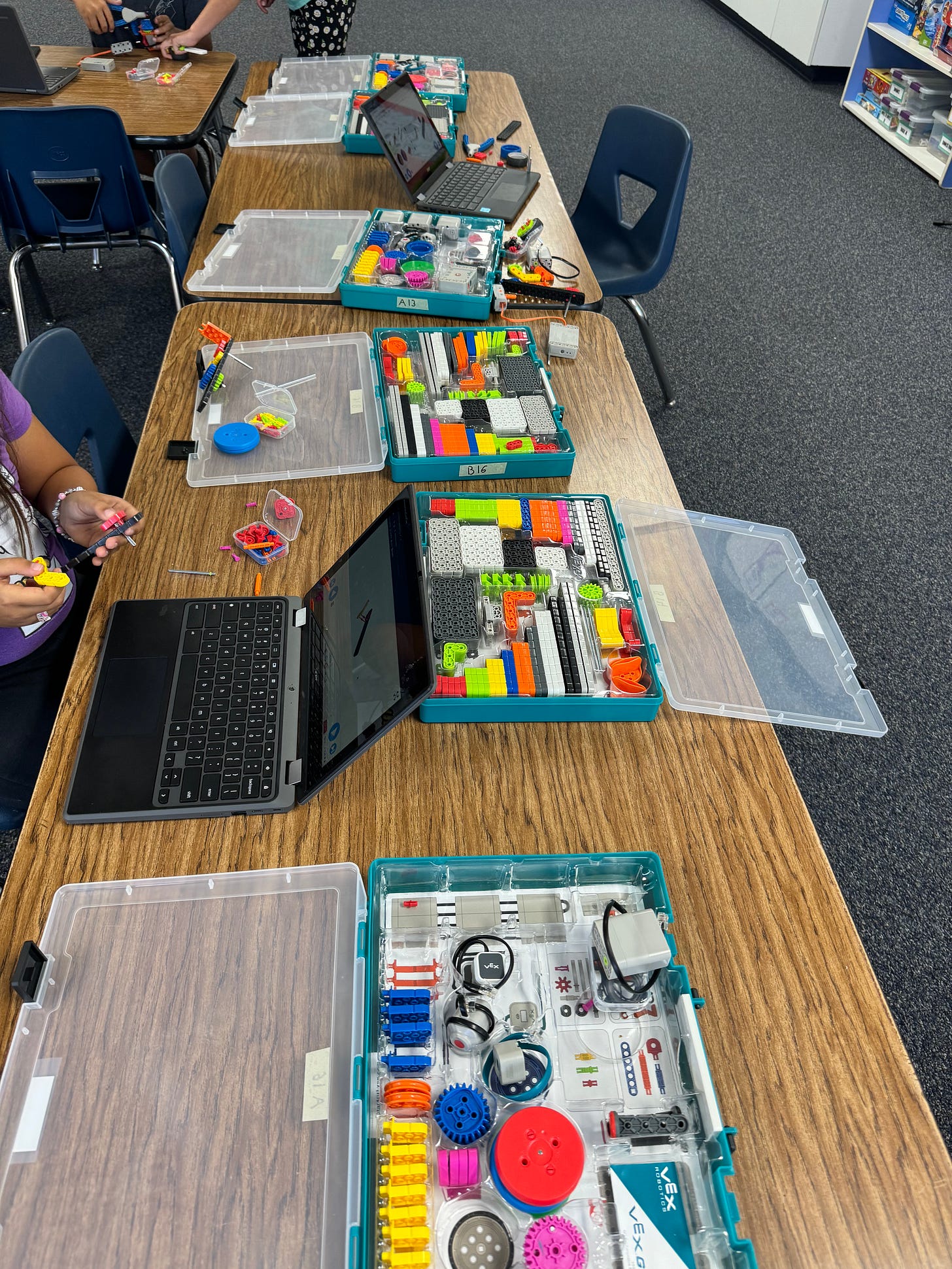VEX Robotics and the Power of Student Engagement
Why STEAM, Design Thinking, and Equity Must Go Hand in Hand by: Saliha Bazmjow
Last winter, I took a chance on something different.
I brought a VEX Robotics challenge to our school—not during the school day, and not with a formal team. I offered it through our afterschool program, where most students had never even heard of VEX before. And honestly? That’s what made it meaningful.
This wasn’t about forming a competition team or chasing trophies. It was about exposure, access, and letting students see themselves in spaces they might not have imagined before.
Across Orange County, robotics programs are thriving. Schools like Crescent Elementary in Anaheim have built strong, well-established VEX IQ programs. Their students regularly compete at high levels—even qualifying for the VEX World Championships. And while that kind of support is incredible to see, it also raises the question: why isn’t this level of access the norm for all students?
In California, we’ve committed to standards that emphasize real-world application, deeper thinking, and STEAM integration. The Math Framework pushes for understanding over memorization and calls for students to engage in collaborative, complex problem-solving. Our STEAM standards focus on creativity, innovation, and connecting disciplines. But these goals only matter if they’re actually being brought to life in the classroom—or in this case, after school.
That’s exactly what we set out to do.
We had 25 students jump in—many with zero experience in coding or robotics. What they did have was curiosity. They named their bots, decorated them, and quickly started seeing themselves as engineers and designers. We used a simple rubric to guide the experience, focusing on teamwork, creative thinking, and perseverance.
By the end of the program, students were confidently using math concepts—measuring, adjusting angles, exploring cause and effect through gears and sensors. But it didn’t feel like a math lesson. It felt like solving real problems. That’s when the learning sticks.
This is what equity looks like in action: not just access to materials, but access to relevant, meaningful learning that reflects the world students are growing up in.
Because the truth is, we’re preparing students for a future where artificial intelligence, automation, and technology will touch every part of their lives. They’ll need more than content knowledge. They’ll need to be adaptive, empathetic, creative thinkers. And that’s why design thinking matters now more than ever.
Design thinking isn’t about getting the right answer—it’s about asking better questions, testing ideas, and learning through iteration. It mirrors the kind of mindset we need to cultivate if we want students to lead, not just follow, in tomorrow’s workforce.
You don’t need a huge budget or perfect setup to start. What matters is giving students the chance to engage, explore, and grow. When they start seeing themselves as capable of designing, solving, and building—they carry that with them long after the lesson ends.
Want to read more about project based learning click the link below:
This isn’t just about robotics.It’s about reimagining what learning can look like when we lead with curiosity, creativity, and high expectations for every learner.


